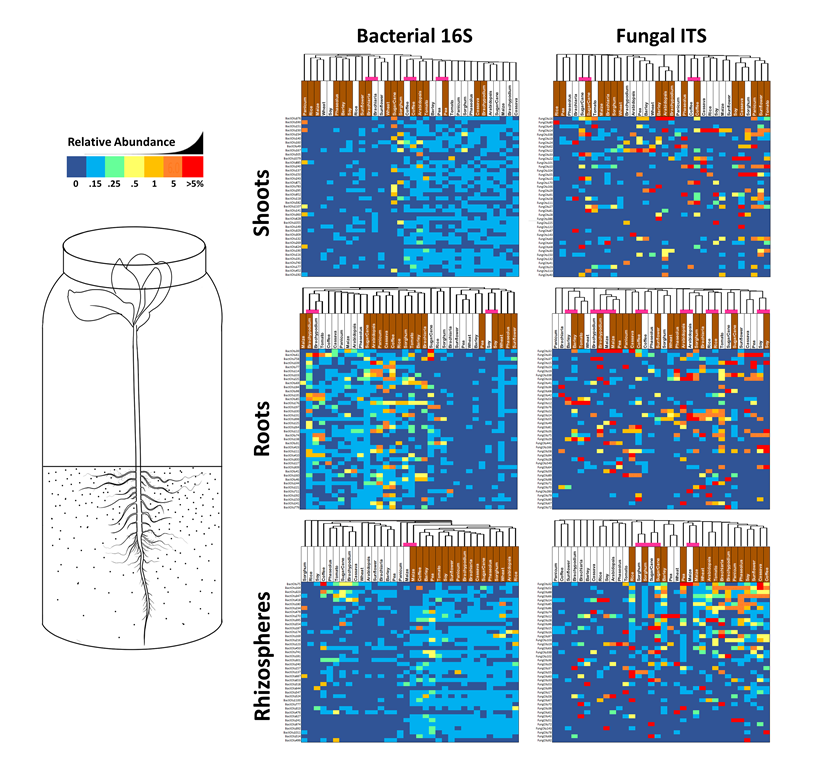A plant’s health and productivity is influenced by its associated microbes. Although the common microbiome is often thought to be the most influential, significant numbers of rare or uncommon microbes (eg. specialized endosymbionts) may also play an important role in the health and productivity of certain plants in certain environments. To help identify rare/specialized bacteria and fungi in the most important angiosperm plants, we contrasted microbiomes of the shoots, roots and rhizospheres of Arabidopsis, Brachypodium, maize, wheat, sugarcane, rice, tomato, coffee, common bean, cassava, soybean, switchgrass, sunflower, Brachiaria, barley, sorghum, and pea. Plants were grown inside sealed jars on sterile sand or field soil. About 95% and 86% of fungal and bacterial diversity inside plants was uncommon, however judging by read abundance, up to half of the mycobiome consists of uncommon fungal cells, while less than 11% of bacterial endophytes are rare. Uncommon seed transmitted microbiomes consisted mostly of Proteobacteria, Firmicutes, Bacteriodetes, Ascomycetes and Basidiomycetes that most heavily colonized shoots, to a lesser extent roots and least of all rhizospheres. Soil served as a more diverse source of rare microbes than seeds, replacing or excluding the majority of the uncommon seed transmitted microbiome. With the rarest microbes, their colonization pattern could either be the result of stringent biotic filtering by most plants, or uneven/stochastic inoculum distribution in seeds or soil. Several strong plant-microbe associations were observed such as seed transmission to shoots, roots and/or rhizospheres of Sarocladium zeae (maize), Penicillium (pea and Phaseolus), and Curvularia (sugarcane), while robust bacterial colonization from cassava field soil occurred with the cyanobacteria Leptolyngbya into Arabidopsis and Panicum roots, and Streptomyces into cassava roots. Some abundant microbes such as Sakaguchia in rice shoots or Vermispora in Arabidopsis roots appeared in no other samples, suggesting they were infrequent, stochastically deposited propagules from either soil or seed (impossible to know based on the available data). Future experiments with culturing and cross inoculation of these microbes between plants may help us better understand host preferences and their role in plant productivity, perhaps leading to their use in crop microbiome engineering and enhancement of agricultural production.

